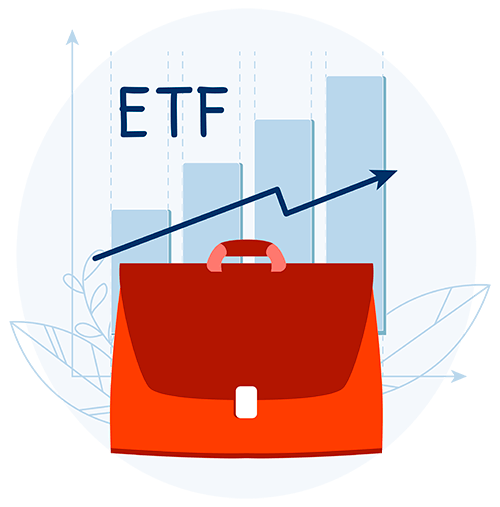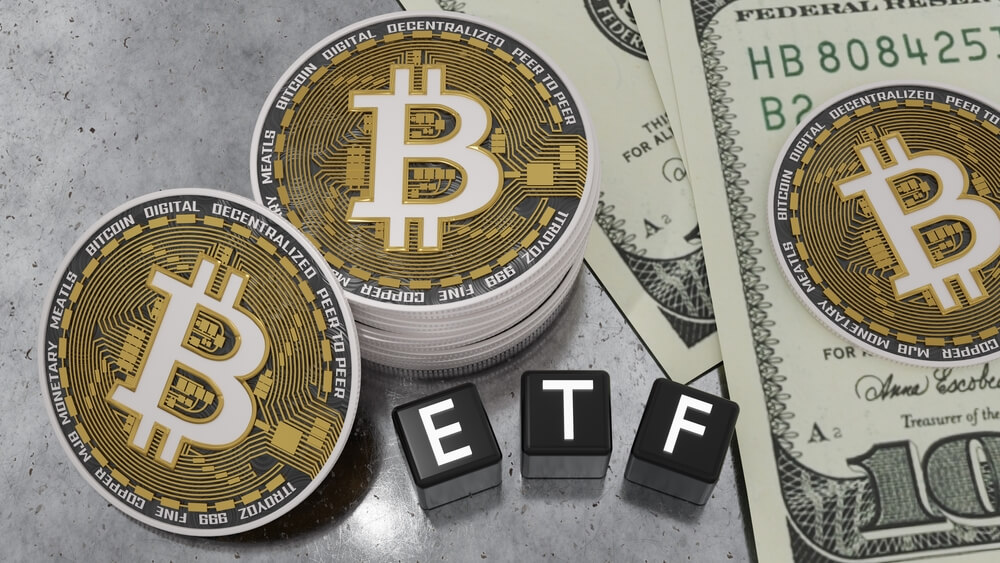
Paper Gold: A Comprehensive Guide
“Gold” usually conjures images of the actual metal (bullion, jewelry, etc.), and that has been the case for decades, if not centuries. Paper or digital gold is a relatively recent phenomenon. It took birth in response to the challenges and negatives of owning and storing gold. Gold is a tangible item and occupies space. And since it’s precious and desired, it must also be protected.

Many people take pride in owning physical gold, but not all. Another section of the crowd looks at gold purely through the investment lens. Unlike stocks and bonds, real gold doesn’t offer returns during ownership. It’s primarily a store of value, which is a great thing. But for those seeking returns and also wanting to own gold, albeit indirectly, paper gold is a solid alternative.
Table of Contents
If you’re unfamiliar with paper gold, that’s okay, as we shall spill it all in this article. We shall cover the following topics to broaden our understanding:
- An intro to paper gold and the various types
- How to buy/invest in paper gold
- The positives and negatives of different paper gold investments
- How paper gold differs from real gold and more
Read more: Is Gold Jewelry a Good Investment
If you’ve considered investing in paper gold but didn’t have the mental clarity to take the plunge, this article may move the needle. Read on to dive into the paper gold sphere and perform investment moves that align with your goals.
What is Paper Gold?

Paper gold is any financial instrument representing exposure to or ownership of gold without physically holding the actual metal. A paper gold instrument derives its value from its underlying asset. Those who don’t want to hold physical gold but want exposure to the metal’s price movements and trends can opt for paper gold. The approach offers investors great liquidity, flexibility, and the opportunity to immerse themselves in the activities of the gold industry.
Although paper gold sounds great on paper (no pun intended), it has two noticeable drawbacks. First, you don’t get to possess physical bullion. The virtual gold ownership is a mere exposure to gold market trends. The second drawback is “counterparty risk.” Paper gold investors depend on the financial entities issuing and managing the gold instruments. With businesses, there are always outside chances of financial risks, such as a default—for instance, the issuer becoming bankrupt or insolvent, or gold ETFs (exchange-traded funds) holding real gold as the underlying asset experiences theft, mismanagement, or fraud issues.
Transaction partner risks can be mitigated considerably if the issuer’s financial stability and credibility are in good stead. As potential investors, you must do due diligence on the issuer’s financial standing and reputation. Also, diversifying your paper gold investments using reputable and regulated financial intermediaries could help alleviate the risk.
Types of Paper Gold
There are different paper gold forms. The following are the most common:
Gold Stocks
A gold stock is a publicly traded share focused on gold. The share could be of a mining company or entities doing business with mining firms (such as financing another company’s mining activities for a percentage share or royalty), gold ETFs, etc. The gold company could also be in the retail gold business. Investing in gold shares will expose you to the gold sector and the potential benefits from movements in gold prices.
Gold ETFs
A gold ETF intends to track the gold price. It provides broad exposure to the gold industry via owning physical gold, mining company shares, gold derivatives (such as gold futures), etc. The ETF investor need not directly own the gold. The fund manager buys the gold or the underlying asset on behalf of retail investors, and the assets purchased ascertain the fund’s value.
Gold ETFs are stock market-traded (such as on the New York Mercantile Exchange’s COMEX division), making buying or selling ETF shares convenient. An ETF share represents a fraction of the gold holdings of a fund. A gold ETF is arguably the most popular form of owning gold on paper.
Gold Certificates
A gold certificate is a paper document issued by financial institutions, such as banks, indicating ownership of a particular amount of gold. The certificate will specify the gold quantity, purity, and other contract-related terms. When you purchase the certificate, you own a specific portion of the physical metal held by a trusted custodian or issuer.
Gold certificates can be transferred, traded, or redeemed for actual gold. In short, a gold certificate lets you simply sell or hold gold without taking physical possession of the metal. A gold certificate, however, is less standard, mainly due to the rising popularity of a gold ETF. By the way, gold ETFs and certificates represent “pool accounts.” The relatively similar investment vehicles entail multiple investors putting their money in a portfolio or fund representing gold-related assets.
Gold Futures
Gold futures agreements let investors speculate on future gold prices. The contract buyer must buy the specified quantity of gold for a specific price at a future date, gaining exposure to gold price movements without owning any physical gold. The futures contract usually denotes the amount of gold traded, typically a standard size. The agreement also specifies the gold purity and quality and the contract expiration date. The prices are not set arbitrarily, but after considering the precious metal’s supply-demand dynamics, geopolitical events, global economic scenarios, interest rates, etc.
Buying/Investing in Paper Gold — How, and Things to Consider
Since gold stock is just another piece of stock, buying the stock should be self-explanatory if you are familiar with the stock market. If not, open an account with a stock brokerage company, choose your gold mining stock, fund your brokerage account, and put in a buy order.
You can buy a gold ETF via a stockbroker. Several online brokerage companies offer a wide variety of gold ETFs. Certain other financial institutions and banks provide gold ETF access as well. Banks and other financial institutions usually offer gold stocks. Some precious metal dealers could also provide gold certificates. They could offer the option to buy the certificate instead of buying and owning physical gold. Gold futures are bought at futures brokerage firms after setting up an account. Reputed futures firms include Charles Schwab, TD Ameritrade, and Interactive Brokers.
Buying or investing in paper gold entails a lot of deliberation. Below mentioned are things to consider about the different paper gold types.
Gold Stocks
If keen on stocks, look to buy stocks of mining companies, not firms with indirect links to the industry. Rising gold prices benefit mining corporations directly. But if you want to negate the risks attached to physical gold mining and still want to benefit from rising gold prices, look to gold streaming firms.
A gold streaming business is a company that signs an agreement with mining firms to buy all or a portion of their gold production at a pre-agreed reduced price that both parties agree to. In return, the gold streaming firm offers upfront capital to mining companies needing money. Gold streaming firms are well-positioned to gain from rising gold prices without exposure to the risks of physical gold mining.
Gold ETF
Take the gold ETF route if you don’t want to spend time researching and picking the best gold stock. When considering a gold ETF, look at the fund’s expense ratio. The expense ratio denotes the fund’s yearly operating expenditure, expressed as a percentage of the total assets. The various costs include administrative fees, management fees, marketing expenses, custodian fees, and other operational costs.
The expense ratio will directly impact your ETF returns as the fund’s expenses are subtracted from its assets, decreasing the NAV (net asset value) and overall performance. A gold ETF’s expense ratio could vary based on the particular fund and the management structure. Most exchange-traded funds have expense ratios typically between 0.1 and 0.5 percent. If the expense ratio is 0.4 percent, you will pay $160 annually in fees on a $40,000 investment. If you have multiple ETFs shortlisted, compare their expense ratios to zero in on the most cost-effective choice.
Note that the gold fund’s expense ratio is not all. Review the fund documentation or prospectus to learn more about other associated costs. Also consider other aspects, such as the fund’s liquidity, tracking error (difference between the ETF and the underlying benchmark’s performances), performance history, overall investment strategy, etc. Also, you’ll have to pay a commission or transaction costs when you buy or sell gold exchange-traded funds ETFs. If you trade actively, those commissions could quickly add up.
Gold Certificates
The above considerations apply to gold certificates too. The reputation and trustworthiness of the service provider, the security and storage arrangements for the certificates, redemption procedures, costs and fees, etc., must be looked into. Get to know company fees, base redemption amount requirements, any limitations or restrictions to redeem existing shares, etc. Also, note that some gold certificates could be easier to sell or buy comparatively.
Gold Futures
To get started with gold futures accounts, a solid understanding of the space is imperative. The learning curve is more than others, and omitting any aspect of the process could lead to losses. Learn how futures agreements work, the factors influencing gold prices, etc. Become familiar with contract specifications such as tick size, trading hours, contract size and months, etc. Immerse yourself in fundamental and technical analyses to recognize the suitable futures agreement and when to enter and exit the contract.
Comprehend the margin requirements your broker and the futures exchange sets. The margin money helps manage a futures contract. The fund must be deposited as collateral to start and uphold a futures position. Ensure you have the required funds to fulfill the starting and maintenance margin needs.
Gold futures should ideally not be your first foray into paper gold. Begin the journey with stocks and ETFs and then graduate to futures. Although financial advisors can help you, you don’t want to depend entirely on them for every decision you take and move you make concerning your gold investments. It will help if you have more than a basic understanding of the investment vehicle. Choosing the right broker helps, particularly relating to competitive trading fees, access to important analysis and research tools, etc.
Read more: Types of Gold
Gold Stocks – Pros and Cons
Gold stocks offer investors exposure to gold prices. Gold stocks’ value also increases as the price of precious metals rises. Gold mining firms typically can generate greater returns than physical gold investments. As mining businesses increase their mining capacity, decrease costs, execute more exploration projects, increase sales, etc., their revenue and profits increase. Those rally stock prices faster than gold prices. But things also depend on the company’s performance, track record, and vision.
If you want to invest in the stocks of gold mining companies, look to established and reputable firms. Barrick Gold and Franco Nevada are examples. These top miners have manageable debt levels, low-cost structures, and limited vulnerability to high-risk mining projects. Gold stocks rise in value and provide returns as “dividends.” Those represent a portion of the company’s profits offered to you proportionate to the shares you hold. However, not all companies have a dividend policy. The companies linked above do.
On the negative side, gold stocks can be pretty volatile since they are not only tied to gold prices. The particular company’s performance also influences stock prices. Operational challenges, production costs, geopolitical risks, and other factors impact stock prices. And you have little to no say over the business’ decision-making and operations. General economic conditions and stock market fluctuations could also affect gold stocks. If you don’t have the appetite for stock market volatility, gold stocks may not be the right investment.
Gold ETFs – Pros and Cons
A gold ETF is easy-to-trade, transparent, accessible, and low-cost. If you’re well-versed in stock trading, you’ll be at home trading gold ETFs. You can buy and sell precious metal ETFs throughout a trading day, letting you benefit from the price fluctuations and choose the timing of your trades. It’s arguably the most affordable way to access gold without dealing with physical gold markup costs, storage costs, security risks, etc. A gold ETF’s expense ratio is lower than other structured gold investment products or actively managed funds, letting you grab a bigger pie of the profits.
The ETF issuer always keeps the fund’s investors up-to-date with the type and amount of gold holdings. The openness lets investors authenticate the fund’s underlying assets and ensure they align with the fund’s worth. Fractional ownership is another hallmark of an ETF, letting investors with a limited budget invest in gold.
One major drawback with a gold ETF is counterparty risk—if one of the parties doesn’t fulfill its commitment to sell or buy gold at the predetermined date and price, that could create complications or financial losses for the other involved party. Also, although the underlying asset could be actual gold, investing in a gold ETF doesn’t automatically translate to ownership of the gold. Potential tracking errors and lack of control are other drawbacks of gold-backed ETFs.
Gold Certificates – Pros and Cons
Arguably, the biggest advantage of a gold certificate is physical gold ownership. In other words, gold certificates can be redeemed for real gold, unlike other paper gold investments. And that is without storing or securing the precious physical asset. A gold certificate also makes owning gold affordable, thanks to the ability to buy the gold in parts. Those without enough money to buy real gold can opt for a gold certificate. Not to mention, the quality and purity of the gold held are guaranteed.
A gold certificate is less liquid than other forms of paper gold. Gold certificates present counterparty risks, too. There’s also the risk of ending up with counterfeit certificates. There aren’t many gold certificate issuers; not all have verified or proven credibility. As with all other paper gold investments, you have limited control over the type of gold held, the storage and security measures, and who manages the physical metal.
Gold Futures – Pros and Cons
Gold futures are a solid and reliable hedge against potential fluctuations in the price of gold. Gold futures enable controlling a larger quantity of gold with a relatively small initial investment. This could boost potential profits if gold prices move favorably. Gold futures are also highly liquid since they are traded on standardized exchanges with good trading volumes. There’s also transparency as the prices of gold futures are public and disseminated widely, letting investors stay on top of market trends and carry out informed trading decisions.
But gold futures are slightly riskier than other paper gold investments. The inherent price fluctuations present a higher risk. The price volatility could result in significant losses or gains, potentially surpassing your initial investment. Gold futures are time-bound. You cannot close out or roll over the contract before expiration without incurring added costs or complications. The futures contract requires depositing a certain sum as collateral, referred to as the “margin requirement.” The collateral requirement could be significant, which may not go well with all investors. They’ll have to be on their toes to meet the obligation whenever it arises.
The biggest obstacle to trading gold futures is the technicality of the arrangement. Gold futures are complex; not everyone can fully comprehend the investment opportunity from day one. For novice or inexperienced investors, concepts such as settlement procedures, contract specifications, rollover processes, margin calls, etc., will be challenging to assimilate.
Paper Gold or Physical Gold? Which is Better?
Paper gold and physical gold have their positives and negatives. One is not necessarily better than the other. However, individual preferences, risk tolerance, and portfolio requirements could make one of the two a better option for some.
Buy paper gold if you want immediate access and a convenient way to gain gold exposure. There’s no need to store and handle physical precious metals. But if you fancy owning a piece of gold, paper gold will be less appealing. Paper gold enables easy trading and is highly liquid.
Purchasing and selling gold is relatively cumbersome and can only be done partially online, unlike paper gold. Storage service, delivery fees, and other aspects must be considered with physical gold. You can invest in paper gold in bits. Small-size gold coins and bars exist, but the options are limited. Not to mention, the costs associated with paper gold investments are lesser comparatively.
Physical gold is tangible and reassuring, unlike speculative paper gold. It offers direct control and removes the opposite party risk synonymous with paper gold. Paper and real gold can act as inflation hedges, portfolio diversifiers, or a safety net against currency fluctuations. However, physical gold is not subject to government regulations or financial system changes that could impact paper gold's pricing, availability, or redemption aspects. Since actual gold has intrinsic value, its prospects don’t alter much with the commotion around it.
Weigh the pros and cons of the two and make a choice. You can opt for both if you like paper gold’s convenience and liquidity and physical gold’s historical value and tangibility. If you’re still split, talk to a precious metals expert or financial advisor to help you make an informed choice after they assess your circumstances and requirements.
Read more: Physical Gold vs. Paper Gold
Conclusion
Although paper gold doesn’t have the charm and appeal of holding gold in the metal, it’s a solid alternative to the physical asset if you buy gold purely for investment reasons, to gain exposure, or diversify your investment portfolio. It’s not necessarily a better investment or inferior to real gold. Ultimately, it’s the investor’s call. And to make that decision, getting familiar with paper gold is imperative. Hopefully, this article provided all the information you needed about paper gold, how it compares to real gold, and everything else.
FAQs
What are the key differences between paper gold and real gold?
The primary difference between physical and paper gold is the possession of the real metal. Paper gold represents a specific quantity of gold that doesn’t amount to absolute gold owned. Buying paper gold, however, means greater trading ease or increased flexibility and liquidity. Digital gold is vulnerable to counterparty risks, market risks, and price manipulation. Physical gold, on the other hand, is subject to loss or theft concerns.
What are some significant risks with paper gold investments?
Counterparty risk, price volatility, dependence on a financial institution, and scope for manipulation represent some of the most significant risks with paper gold ownership. Although market liquidity is excellent, that could vary based on the instrument and the market scenario.
Is paper gold safe?
Yes, paper gold is a safe haven, but it also depends on your specific investment decisions and who you deal with. It’s imperative to do your research, select reputable issuers, and understand paper gold investment’s terms and conditions.
Should you buy a gold ETF backed by physical gold or digital gold (shares, futures, etc.)?
The decision to choose between a gold ETF backed by real gold or virtual gold is up to the investor. Here are a few key differences between the two that potential investors split between the two should know.
A gold ETF with physical gold backing offers direct exposure to gold price movements. It will appeal more to investors keen on an investment backed by a tangible asset. The ETF provides the advantages of gold ownership minus the hassles related to storing, transacting, or securing real gold.
A gold ETF backed by non-physical gold uses gold stocks, mutual funds, derivatives, or futures contracts to track gold prices. These instruments replicate gold performance without physical holdings. These gold ETFs might provide certain benefits such as lower costs, enhanced liquidity, ease of trading, etc. But there are also risks related to counterparty and derivates exposure.
Peruse the pros and cons of both gold ETF types and choose one that best fits your preference and risk appetite. Talk to a financial advisor for more guidance.
What is ideal for long-term investment: paper gold or real gold?
Both paper gold and actual gold can be long-term investments. However, the choice boils down to investment goals, liquidity requirements, risk tolerance, storage capacities, and preferences of individual investors. Sit down with a financial advisor and discuss the various aspects before selecting. Remember the golden rule of “diversification.” And if investing in paper and physical gold helps that cause, buy both.


